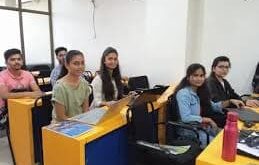In the context of Australian vocational education and training (VET), Recognition of Prior Learning (RPL) is a critical process that enables individuals to gain formal recognition for the skills and knowledge they have acquired through work experience, education, volunteering, or other life experiences. Instead of undergoing traditional training and assessment for a qualification, RPL allows candidates to have their prior learning assessed and credited towards the achievement of a nationally recognised qualification.
RPL is a key feature of the Australian Qualifications Framework (AQF), which governs the standards and quality of education and training in Australia. The process can significantly speed up the pathway to a qualification, reduce the need for repetition of learning, and ensure that skills are formally acknowledged by employers and other educational institutions.
In this article, we’ll explore what RPL is, why it is important, and the ASQA standards for RPL that Registered Training Organisations (RTOs) must meet when offering this process.
What is RPL (Recognition of Prior Learning)?
RPL is a process that allows individuals to have their existing skills and knowledge formally assessed, which can lead to a formal qualification or credit towards one. RPL does not require individuals to repeat training or learning they have already acquired; instead, it offers a pathway to recognise that learning and formalise it through assessment.
RPL can be based on a range of prior experiences, such as:
- Work Experience: Skills and knowledge gained from working in a specific industry or occupation.
- Formal Education: Learning that has been undertaken through previous formal studies, such as courses or qualifications that might not be part of the Australian Qualifications Framework (AQF).
- Informal Learning: Skills gained through volunteering, self-directed learning, or personal projects.
- Non-formal Learning: Learning that has taken place in settings such as workplace training or community education programs.
The RPL process typically involves the following steps:
- Application: The learner submits an application for RPL to the RTO, providing evidence of their prior learning.
- Evidence Collection: The learner collects and submits evidence that supports their claim for RPL. This may include resumes, work samples, references, certificates, or portfolios.
- Assessment: The RTO assesses the evidence against the criteria of the relevant qualification or unit of competency.
- Outcome: If the RPL assessment shows that the learner’s prior learning matches the required skills and knowledge, they are granted a qualification or unit credit.
Why is RPL Important?
RPL benefits both learners and the Australian VET system in several key ways:
- Recognition of Skills and Knowledge: RPL ensures that individuals’ prior learning is formally recognised, reducing the need to duplicate learning they have already achieved.
- Faster Pathways to Qualifications: For those with substantial work experience or existing knowledge, RPL offers a faster and more efficient route to obtaining formal qualifications.
- Flexibility: RPL caters to people with diverse learning backgrounds, from those with extensive work experience to those who have pursued informal learning outside traditional educational settings.
- Increased Employability: Having a nationally recognised qualification or formal credit for units of competency can make individuals more competitive in the job market.
ASQA Standards for RPL
The Australian Skills Quality Authority (ASQA) is the regulatory body responsible for ensuring that RTOs maintain the required standards for delivering vocational education and training, including the process of RPL. ASQA sets specific standards and guidelines for how RTOs must conduct RPL assessments to ensure they are fair, consistent, and meet the required national quality standards.
The standards for RPL are embedded within the Standards for RTOs 2015, a set of guidelines that RTOs must adhere to in order to remain registered with ASQA. Key ASQA standards relevant to RPL include:
1. Fairness and Consistency in Assessment (Standards for RTOs, Clause 1.8)
ASQA requires that RTOs ensure the assessment process, including RPL, is fair and consistent. This means that the assessment of prior learning must be conducted in a way that provides equal opportunity for all learners, regardless of their background or mode of learning. RTOs must ensure that:
- The assessment process is transparent and clearly explained to the learner.
- Learners are provided with the necessary support and guidance throughout the RPL process.
- Assessments are conducted using valid and reliable methods that accurately assess the learner’s skills and knowledge.
2. Evidence Requirements for RPL (Standards for RTOs, Clause 1.13)
RTOs must ensure that the evidence provided by candidates for RPL is sufficient, valid, and authentic. This means that learners must provide evidence that demonstrates their competence in the relevant unit of competency or qualification. RTOs must also ensure that:
- The evidence collected is directly linked to the unit(s) of competency.
- Evidence is collected in a variety of ways (e.g., work samples, third-party reports, interviews, written assessments).
- The evidence submitted is valid (it accurately reflects the learner’s abilities), sufficient (it covers all the required elements), and current (it reflects the learner’s current skills and knowledge).
3. Assessment Decisions (Standards for RTOs, Clause 1.5)
RTOs must ensure that all assessments, including RPL assessments, are carried out by qualified assessors. The assessors must have the necessary competence in the relevant industry and be able to make informed, objective assessment decisions based on the evidence provided. The standards require that:
- Assessors have relevant training and experience to assess the particular unit(s) or qualification.
- RPL assessments are conducted with integrity and transparency, ensuring that learners are not unfairly disadvantaged by the process.
4. Providing Learner Support (Standards for RTOs, Clause 1.7)
RTOs are required to provide learners with adequate support throughout the RPL process. This includes offering guidance on what types of evidence are needed, how to prepare a portfolio, and how to go about gathering and submitting that evidence. RTOs must also ensure that learners with special needs (e.g., language, literacy, or numeracy difficulties) are provided with additional support if necessary.
5. Access to Information (Standards for RTOs, Clause 4.1)
Learners must be provided with accurate, accessible, and up-to-date information about the RPL process before they commit to applying. This includes information about the eligibility criteria, the types of evidence required, and the steps involved in the assessment process. Transparency ensures that learners know exactly what to expect and what is required of them.
6. Recognition of Other Learning (AQF and Standards for RTOs, Clause 1.4)
RTOs are also required to recognise prior learning from other registered institutions or qualifications that align with the AQF standards. If a learner has completed studies that are equivalent or similar to a unit of competency or qualification, the RTO must assess whether these qualifications can be recognised under the RPL process.
 The Random Collective Where Curiosity Meets Creativity
The Random Collective Where Curiosity Meets Creativity





